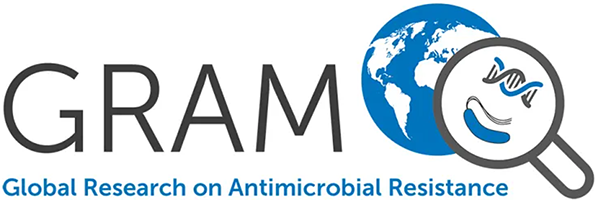Population-level faecal metagenomic profiling as a tool to predict antimicrobial resistance in Enterobacterales isolates causing invasive infections: An exploratory study across Cambodia, Kenya, and the UK.
Auguet OT., Niehus R., Gweon HS., Berkley JA., Waichungo J., Njim T., Edgeworth JD., Batra R., Chau K., Swann J., Walker SA., Peto TEA., Crook DW., Lamble S., Turner P., Cooper BS., Stoesser N.
Background: Antimicrobial resistance (AMR) in Enterobacterales is a global health threat. Capacity for individual-level surveillance remains limited in many countries, whilst population-level surveillance approaches could inform empiric antibiotic treatment guidelines. Methods: In this exploratory study, a novel approach to population-level prediction of AMR in Enterobacterales clinical isolates using metagenomic (Illumina) profiling of pooled DNA extracts from human faecal samples was developed and tested. Taxonomic and AMR gene profiles were used to derive taxonomy-adjusted population-level AMR metrics. Bayesian modelling, and model comparison based on cross-validation, were used to evaluate the capacity of each metric to predict the number of resistant Enterobacterales invasive infections at a population-level, using available bloodstream/cerebrospinal fluid infection data. Findings: Population metagenomes comprised samples from 177, 157, and 156 individuals in Kenya, the UK, and Cambodia, respectively, collected between September 2014 and April 2016. Clinical data from independent populations included 910, 3356 and 197 bacterial isolates from blood/cerebrospinal fluid infections in Kenya, the UK and Cambodia, respectively (samples collected between January 2010 and May 2017). Enterobacterales were common colonisers and pathogens, and faecal taxonomic/AMR gene distributions and proportions of antimicrobial-resistant Enterobacterales infections differed by setting. A model including terms reflecting the metagenomic abundance of the commonest clinical Enterobacterales species, and of AMR genes known to either increase the minimum inhibitory concentration (MIC) or confer clinically-relevant resistance, had a higher predictive performance in determining population-level resistance in clinical Enterobacterales isolates compared to models considering only AMR gene information, only taxonomic information, or an intercept-only baseline model (difference in expected log predictive density compared to best model, estimated using leave-one-out cross-validation: intercept-only model = -223 [95% credible interval (CI): -330,-116]; model considering only AMR gene information = -186 [95% CI: -281,-91]; model considering only taxonomic information = -151 [95% CI: -232,-69]). Interpretation: Whilst our findings are exploratory and require validation, intermittent metagenomics of pooled samples could represent an effective approach for AMR surveillance and to predict population-level AMR in clinical isolates, complementary to ongoing development of laboratory infrastructures processing individual samples.

